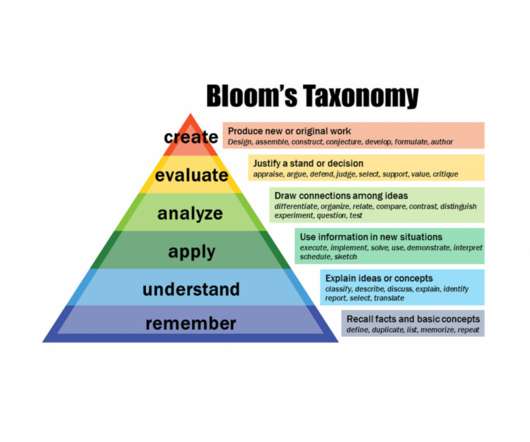The Bloom’s Taxonomy Instructional Design Model in E-Learning – An Introduction
Capytech
DECEMBER 9, 2022
The Bloom’s Taxonomy Instructional Design Model in E-Learning – An Introduction This is the second blog in our series looking at the main instructional design models that are used in e-learning. In this article, we are going to explore Bloom’s Taxonomy, a well-established framework in the education sector.


















Let's personalize your content